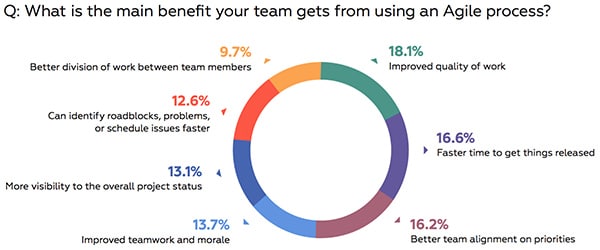

The way Agile teams work provides visibility and transparency at every stage of product development. In this sense, by interacting with each other and applying Agile best practices individually, the whole team improves and moves forward in unison, boosting overall efficiency while providing quick responses and solutions. This interaction translates into insights that improve efficiency, such as delivery trends causing bottlenecks or workflows that need to be modified to increase productivity. This includes transparent communication within the team (design, development, QA) and the project’s wider circle (product owners and stakeholders). Instead, it’s the opposite: Agile promotes active collaboration.

The latter does not mean team members work on their own, though. In turn, this empowers each team member to make appropriate decisions related to their role, enhancing their commitment to delivering the best possible software product. Manager responsibilities are taken on by the whole team, increasing motivation and promoting project ownership. Since Agile teams are self-organized, they have more freedom than traditional software development approaches. These are four of the top reasons why industry-leading companies choose to work with this methodology: 1. The benefits of Agile software development are numerous. Agile emphasizes collaboration, flexibility, continuous improvement, and high-quality results. It is applied to complex software projects because of its adaptiveness. The Agile approach heeds a set of principles (for example, frequent delivery of working software, adaptation of changing requirements throughout the development process, prioritizing simplicity, etc.) that streamline software creation.


This is what the Agile approach is all about. Agile software development requires an adaptable and flexible team willing to respond rapidly to changes, even when a client makes urgent demands while offering continuous value-driven delivery.


 0 kommentar(er)
0 kommentar(er)
